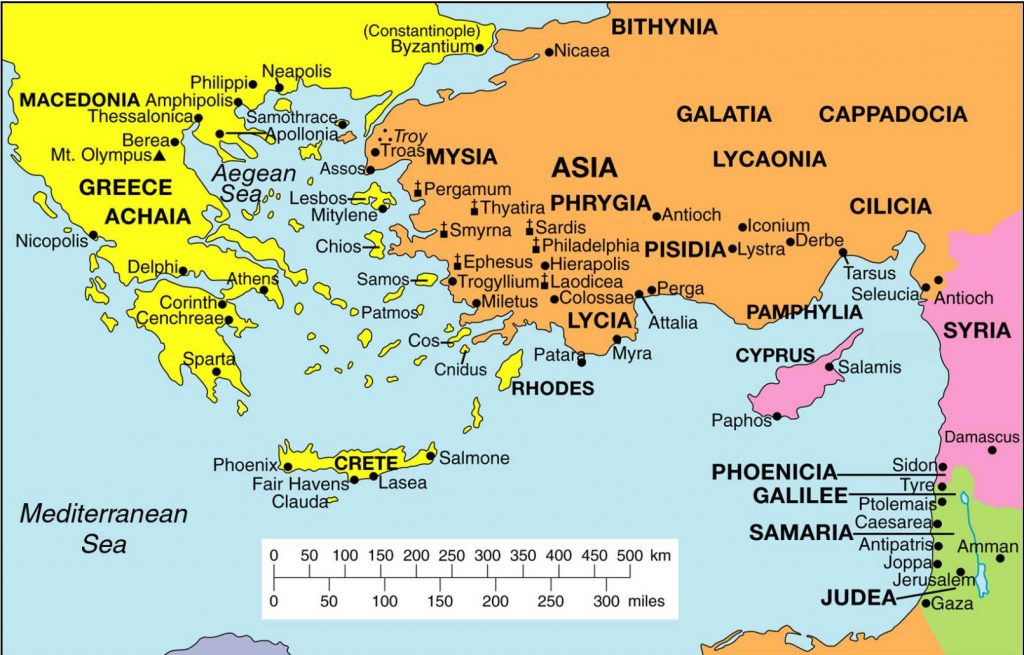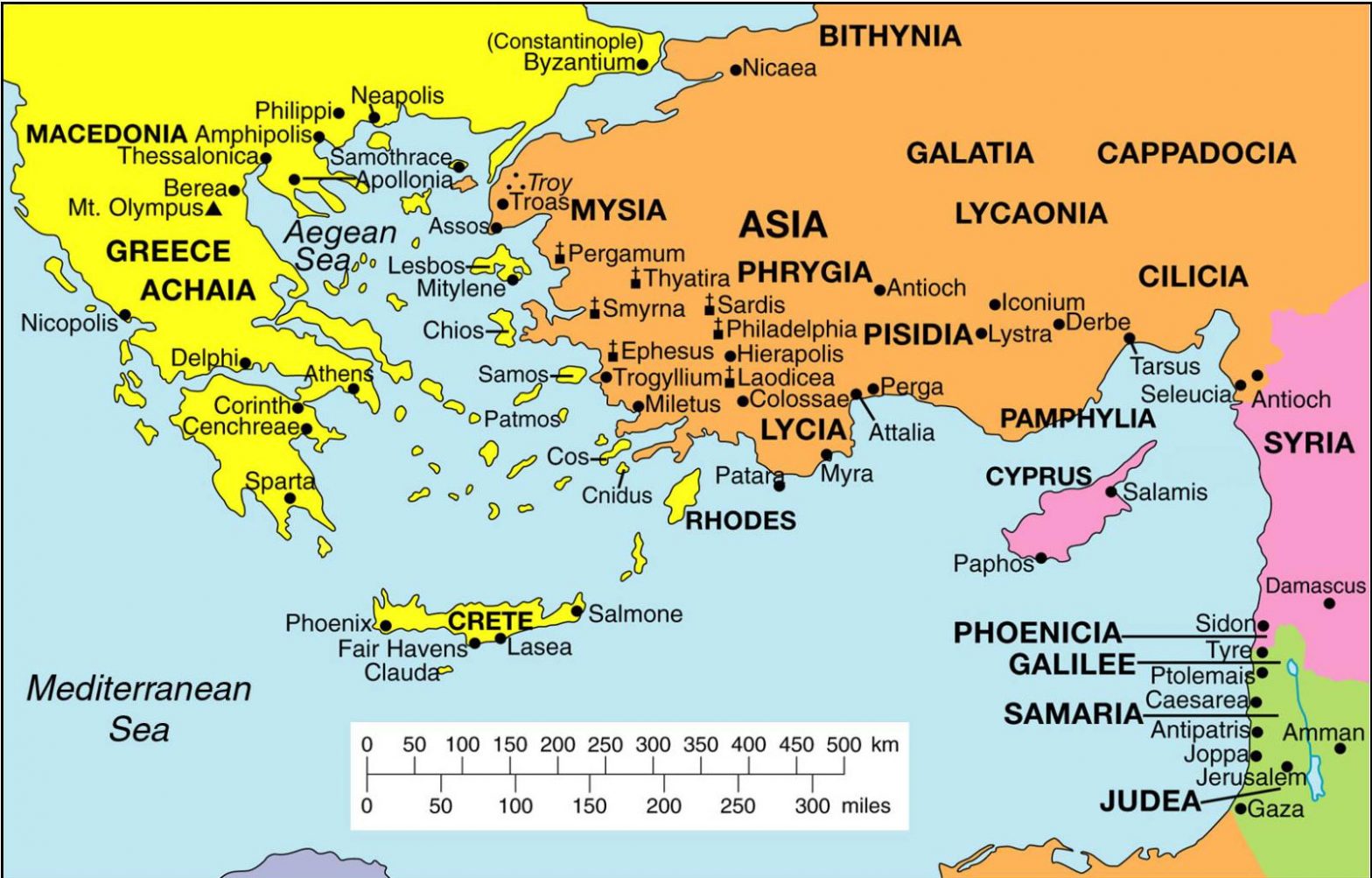
Colossae was a city in Phrygia, in the Roman province of Asia (part of modern Turkey), about 100 mile east of Ephesus in the region of the 7 churches of Rev. 1–3. The city lay alongside the Lycus River, not far from where it flowed into the Maender River. The Lycus Valley narrowed at Colossae to a width of about two miles, and Mt. Cadmus rose 8,000 feet above the city.
Colossae was a thriving city in the fifth century B.C. when the Persian king Xerxes (Ahasuerus, cf. Esth. 1:1) marched through the region. Black wool and dyes (made from the nearby chalk deposits) were important products. In addition, the city was situated at the junction of the main north-south and east-west trade routes. By Paul’s day, however, the main road had been rerouted through nearby Laodicea, thus bypassing Colossae and leading to its decline and the rise of the neighboring cities of Laodicea and Hierapolis.
Although Colossae’s population was mainly Gentile, there was a large Jewish settlement dating from the days of Antiochus the Great (223–187 B.C.). Colossae’s mixed population of Jews and Gentiles manifested itself both in the composition of the church and in the heresy that plagued it, which contained elements of both Jewish legalism and pagan mysticism.
The church at Colossae began during Paul’s 3-year ministry at Ephesus (Acts 19). Its founder was not Paul, who had never been there (Colossians 2:1); but Epaphras (Colossians 1:5-7), who apparently was saved during a visit to Ephesus, then likely started the church in Colossae when he returned home. Several years after the Colossian church was founded, a dangerous heresy arose to threaten it—one not identified with any particular historical system. It contained elements of what later became known as Gnosticism: that God is good, but matter is evil, that Jesus Christ was merely one of a series of emanations descending from God and being less than God (a belief that led them to deny His true humanity), and that a secret, higher knowledge above Scripture was necessary for enlightenment and salvation. The Colossian heresy also embraced aspects of Jewish legalism, e.g., the necessity of circumcision for salvation, observance of the ceremonial rituals of the OT law (dietary laws, festivals, Sabbaths), and rigid asceticism. It also called for the worship of angels and mystical experience. Epaphras was so concerned about this heresy that he made the long journey from Colossae to Rome (Colossians 4:12, 13), where Paul was a prisoner.
The Letter to Colossians was written from prison in Rome (Acts 28:16–31) sometime between A.D. 60–62 and is, therefore, referred to as a Prison Epistle (along with Ephesians, Philippians, and Philemon). It may have been composed almost contemporaneously with Ephesians and initially sent with that epistle and Philemon by Tychicus (Eph. 6:21, 22; Col. 4:7, 8). See Introduction to Philippians: Author and Date for a discussion of the city from which Paul wrote. He wrote this letter to warn the Colossians against the heresy they faced, and sent the letter to them with Tychicus, who was accompanying the runaway slave Onesimus back to his master, Philemon, a member of the Colossian church (Colossians 4:7–9; see Introduction to Philemon: Background and Setting). Epaphras remained behind in Rome (cf. Philem. 23), perhaps to receive further instruction from Paul.
This Grace to You article originally appeared here.
Copyright 2007, Grace to You. All rights reserved. Used by permission.
